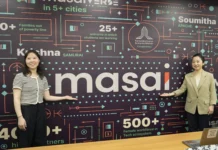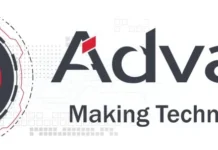Article Authored By: Raunaq Kakkar, Founder, Found My Teacher
Since 2000, the human attention span has plummeted to 8.5s, and it’s only expected to decrease further. Research shows that the human attention span now is lesser than that of a goldfish as individuals are easily distracted by the world around them. In the era of Instagram Reels, TikTok, and Twitter, when news and entertainment is being presented in minute-long videos and 280 characters, why should education be any different? This is where new avenues of education are being favoured.
Microlearning 101
The global Covid-19 pandemic mandated an overhaul of the education system worldwide as we knew it. But it also produced opportunities that encouraged innovation in teaching and learning techniques. Micro-learning is a bite-sized approach to learning that became popular at the same time. It is a learning tactic first, a trend second. It has existed for a long time but has gained center-stage only during the pandemic. One of the oldest forms of microlearning that one can recall would be cue cards. Essentially, microlearning breaks down large concepts into highly precise, small chunks of information that are easy for the learner to understand and absorb.
The whole concept of microlearning is based on German psychologist Hermann Ebbinghaus’ forgetting curve. According to his study, it was found that people typically lose 80% of the knowledge they learn within a month. Large amounts of information learnt is retained only for short periods and depletes over time. Microlearning helps address this issue.
Short snippets of relevant information are retained better by individuals and applied by them to real-life situations to complete tasks efficiently. Gone are the days of verbose text and lengthy PowerPoint presentations. Flashcards, illustrations, visual aids like videos, audio, interactive quizzes and games, simulations, blogs, gamification, animation, e-books, etc., are the modern-day learning tools that are also the biggest assets of microlearning.
ALSO READ : 5 ways to infuse emotions into your storytelling
The appeal of bite-sized learning
The digital native generation of today is drawn to microlearning as it is customised to their needs and this generation is known to adopt methods that add convenience to their life. The following are some of the notable differences in using microlearning over conventional learning:
- Time spent: Lesser time spent to learn and go through information since the content for microlearning can be consumed in anywhere between one to ten minutes
- Retention: Improved knowledge retention as the learning is focused and students need not concentrate for extended periods in one sitting
- Engagement: The interactive and short bursts of information keep the learner engaged. Also, gamification of any kind breathes new life into dry concepts, captures learner attention, and fuels competitiveness
- Learning environment: On-demand learning anywhere due to ease of access to content on smart devices
- Pace of learning: Allows self-paced learning by letting students decide when and how they want to learn. Hence, learning is democratised.
- Motivation: Improved motivation as breaking down complex concepts makes the process of learning less intimidating
- Overall experience: The use of multimedia elements enhances the learner experience
- Costs: The approach is cost-effective and affordable to the user. Either it’s completely free or the app is free to download with nominal charges for content. Either way, it ensures a high return on investment
- Variety of topics: Microlearning can be adapted to teach a range of topics – academic or otherwise
- Learner centric: Scope for personalised learning through topic repetitions and review that ensures learner progress
The future of microlearning
There are many successful use cases of microlearning across industries and learners of all age groups. More people are recognising the value of this concept across the board. So much so that it is seen as the future of corporate training. It helps employees upskill while working, retain new knowledge and be mentally engaged. The scope of microlearning also goes beyond academics and acquiring career skills as it creates the habit of lifelong learning. The next time you want to learn something new, however mundane, microlearning will be the way to go.
Important Announcement – EasyShiksha has now started Online Internship Program “Ab India Sikhega Ghar Se”
Covid-19 provided an impetus to digital learning by forcing a shift from traditional classrooms to online learning at the click of a button. Online education from the comfort of your homes is here to stay and there is no limit to its evolution. Just as education institutes accepted online learning platforms during the pandemic, incorporating microlearning into higher education is one way of ensuring robust learning experiences in the future as well. Its short snippets will help teachers convey key information without any difficulty. The ultimate goal is to provide quality education and help students learn better by equipping them with the best resources.
As technology evolves further, new ways of delivering microlearning content will emerge. As the metaverse develops, this mode of learning has the potential to become experiential. A combination of advancements in virtual reality (VR), augmented reality (AR), machine learning, and robotics can engage all of the learner’s senses. Hence, it would be no surprise if methods such as microlearning that utilise these technologies become the preferred mode for learning over conventional techniques.
Visit EasyShiksha for skill development






































































